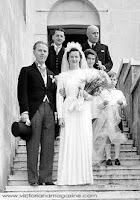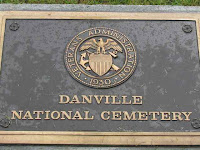 |
| A Wedding |
 We
love to plan and prepare for the major events in our lives; graduations,
weddings, births, anniversaries, reunions, but when it comes to planning our death – that
seems to flummox us like nothing else.
Yet, it is a major life event, and it does need our attention and
planning. Maybe now more than
ever!
We
love to plan and prepare for the major events in our lives; graduations,
weddings, births, anniversaries, reunions, but when it comes to planning our death – that
seems to flummox us like nothing else.
Yet, it is a major life event, and it does need our attention and
planning. Maybe now more than
ever! |
| Invoice Example |
 Death
is a $12 to $15-billion industry in the United States. As we continue to die,
rates continue to climb. Expenses
for a funeral service can vary dramatically, depending on what type of funeral you decide on and where you are located. According to
the 2010 Funeral Price Survey by the National Funeral Directors Association
(NFDA) http://www.nfda.org/, Americans
spent, on average, $7,775.00 for an adult funeral in 2009, based on the elements of a
regular, traditional funeral.
Death
is a $12 to $15-billion industry in the United States. As we continue to die,
rates continue to climb. Expenses
for a funeral service can vary dramatically, depending on what type of funeral you decide on and where you are located. According to
the 2010 Funeral Price Survey by the National Funeral Directors Association
(NFDA) http://www.nfda.org/, Americans
spent, on average, $7,775.00 for an adult funeral in 2009, based on the elements of a
regular, traditional funeral. |
| Grave monument |
 |
| Opening a Grave |
This
does not include the cemetery
costs which include the gravesite, vault, opening and closing of the grave, or the grave
marker. These charges can run
another $2,000 to $3,000 for interment in
‘regular’ cemeteries.
(Remember, the larger, more popular or exclusive a cemetery is, the
higher the cost to get admitted.)
And the price of a grave marker or monument depends on what you choose.
 |
| Traditional Funeral |
So
what elements make up a traditional funeral? What are you paying $7,775.00 on average, for? Note: a funeral service
involves a body being present, it occurs soon after death, and usually includes
a viewing of the body. If there is
no body present – it is called a memorial service, does not require a funeral
director to be involved and may be held at any time.
 To
begin the funeral process, you will need to pay for copies of the death
certificate. Then there’s a
transportation charge to take the deceased to the funeral home of your choice.
To
begin the funeral process, you will need to pay for copies of the death
certificate. Then there’s a
transportation charge to take the deceased to the funeral home of your choice.
Studies
have found that people make the decision on the funeral home based on these
criteria:
Family
history – they continue to go to the funeral home the family has always used.
Personal
recommendations – these are based on suggestions from friends and family.
 |
| Funeral Planning |
 |
| Itemized Statement |
A
Funeral Cost Breakdown:
 |
| Offering Professional Services |
 |
| Use of Funeral Home |
 |
| Funeral Cars |
Supplemental
or Optional charges include
transporting the deceased to the funeral home, use of the funeral home, the
services of the funeral home attendants for custodial care and arranging the
funeral, embalming, cosmetology, charges for the casket or urn, burial vault,
obituary notices, flowers, music, prayer cards, memorial cards, acknowledgement
cards, providing the hearse, and limousine or funeral cars for transportation to the cemetery
for the interment.
Embalming
is Optional
You
do not have to have the deceased embalmed. Embalming is never required for the first 24 hours after death.
Also, you have a set amount of time to bury a body before embalming may be required according to your state law. There are
several religions in the United States that do not allow a body to be embalmed.
 |
| Embalming Table |
According
to Funeral Consumers Alliance, http://www.funerals.org/ “There is no public health purpose
served by embalming.” However, the Federal Trade Commission does allow funeral
homes to require embalming for public viewing.
Embalming does not preserve the body nor does it not stop
decomposition. It only slows it
down for a period of time.
Caskets
One
of the largest expenses of a funeral is the casket. Caskets come in all makes and models. There are very basic caskets - the
unadorned pine box, - usually running $500 to $1,000.
 |
| 14K Gold Casket |
 |
| Bronze Casket |
More
detailed caskets with gaskets, seals and liners can cost up to several
thousands of dollars, depending on what extras you select. Up to $10,000 can buy a bronze casket.
$40,000 or more will buy you one adorned with gold or jewels!
Here
is a break down of funeral costs, provided by the National Funeral Directors
Association for 2010.
Average Funeral Service Costs:
Professional
Services $1,800
Transfer of Remains
to Funeral Home $250
Casket (Metal) $2,295
Embalming $628
Cosmetology $200
Use of
facilities/staff for viewing $395
Use of
facilities/staff for Funeral Service $450
Use of Hearse for
funeral $275
Use of Limo $125
Service Van $125
Basic Memorial
Cards $125
Graveside Service $405
Average Funeral
Service Costs $7073.00
This does not show average cost for flowers, death
certificate, refrigeration fee (when embalming is not selected,) publishing
obituaries, organist, clergy, etc.
Cemetery Burial
Costs:
 |
| Digging a Grave by Hand |
The first cost for a traditional interment is the price of the
burial. The charges associated
with this include the grave opening and closing. (Formerly known as digging the grave and filling it
in.) And there may be a charge for
annual or perpetual care, (also known as grounds and grave maintenance.)
 |
| Installing a Vault |
 |
| Concrete Vault |
Most cemeteries also charge for a vault. Known as the outer burial container or a grave-liner, these
vaults may be made of concrete, steel or fiberglass. Their purpose is to keep the ground from sinking in as the
casket deteriorates over time.
This also makes it easier to use heavy equipment in the cemetery when
needed. Just as caskets do not
prevent the body from decomposing, neither do vaults. No state requires a vault be installed, but most cemeteries
do. Vault prices range from $1,200 to $2,000. The price of installing
the vault may be included with the vault price. If not, figure another $300 on average.
 |
| Family Mausoleum |
 |
| Stacked Mausoleum |
Other burial options instead of in-ground burials include mausoleums
and columbariums. Mausoleums are above ground structures where the casket is placed in a
drawer-like space. Mausoleums may
be private or public. Private
mausoleums were especially popular during the late 1800’s through the 1920’s,
mainly for well-to-do individuals and families. Private or family mausoleums have regained some popularity,
but look less like small buildings and more like stacked drawers.
 |
| Public mausoleum |
Some cemeteries also offer public mausoleums. This consists of a large public
building where hundreds, even thousands of people are entombed. Many public mausoleums offer the
advantage of visiting in a quiet, comfortable place, regardless of the weather.
 |
| Columbarium |
Columbariums are smaller versions of mausoleums, offering a niche for
urns to be placed. The urns are
the receptacles for cremated remains.
Plaques attached to the niches bear the name and information about the
deceased.
 |
| Rules on Decorations |
 |
| Cemetery Information |
As with funeral homes, cemeteries should provide you with
an itemized price list before you buy.
Be sure to read and get a copy of the cemetery’s rules and
regulations. Information on stone
size and requirements will be listed here. Also find out the rules on grave decorations and plantings,
and become familiar with the cemetery’s hours for visitation. Public cemeteries may cost more
than not-for-profit cemeteries, especially when considering their location and
popularity.
According
to the National Funeral Directors Association, cemetery charges for 2010
average as follows.
Average Cemetery Burial Costs:
Cemetery Charges $1,400
Vault $1,195
Average Burial
Costs $2,595
(Perpetual Care is
usually between 5 to 15% of the total sale.)
This number does not include the cost of a gravestone, monument, urn, or
space in a mausoleum or columbarium. These costs vary greatly depending on what you have
selected and where the cemetery is.
Total Cost for Average Funeral & Interment $9,668
(Not including third party charges as listed after funeral service
costs and cemetery burial costs.)
 |
| Graveside Service |
 |
| Direct Burial |
You also have the right to select direct burial. This
means there is no embalming, no public viewing of the body; no funeral home services
need to be performed. You will need to get a death certificate and set up
burial with the cemetery. You also
have the option of holding a graveside service at the time of burial and or/a
memorial service at a later date.
 All told, for a basic, traditional funeral with viewing, hearse and burial, expect to spend around $10,000 to $15,000 dollars. As my grandfather used to say, "Death is not for the faint-of-heart!"
All told, for a basic, traditional funeral with viewing, hearse and burial, expect to spend around $10,000 to $15,000 dollars. As my grandfather used to say, "Death is not for the faint-of-heart!"
~
Joy

















































